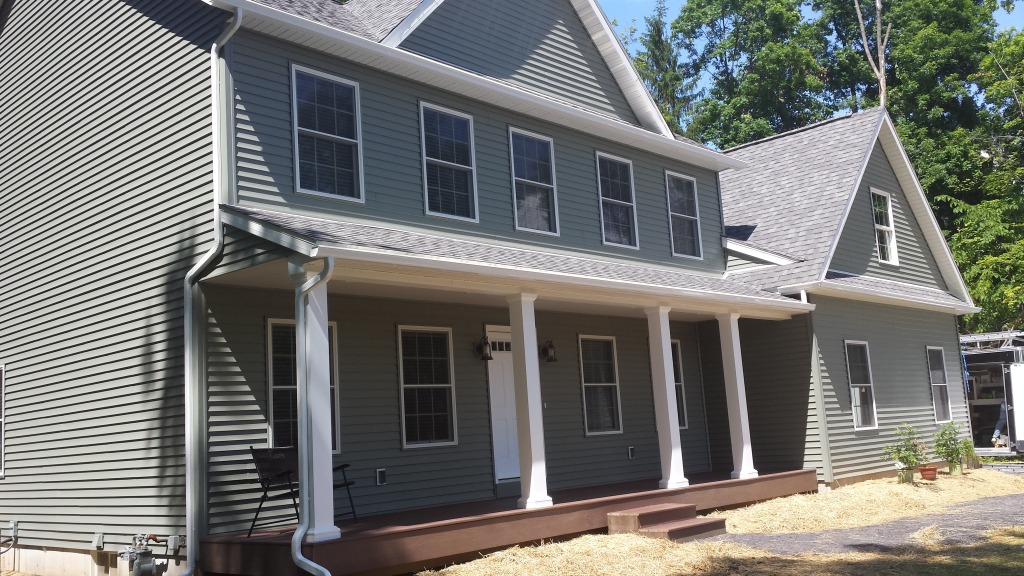Gutters are one of the first lines of protection against the elements. Sure, the roof may bear the brunt of a pounding rain, ice or snow, but it’s the gutters’ job to make sure that water moves off of the roof and away from the house. And there can be a lot of water. One inch of rain on a 1,500-square-foot roof produces about 935 gallons of water.
If that water just rolled over the side of the roof and down the wall of the house, it could make its way into the building. Water that hits the ground at the base of the wall can cause wet basements or weaken the foundation. The soil in planting beds near the wall could erode, or the plants themselves could be damaged. Houses need gutters and downspouts that are in good working order.
Many times, it is difficult to tell whether your gutters are working as they should because they often malfunction when the weather is at its worst, which is not an ideal time to perform a gutter inspection. But gutters that need to be replaced leave behind clues.
Here are some things to look for to determine whether you have a gutter problem. Some problems can be repaired, but others call for replacement. A qualified gutter installer, like Gutter Boyz of Kentucky, can help you make the determination.
Visible Sagging or Separating
Sometimes the condition of a problem gutter is obvious, such as one that is loose and pulled away from the house or visibly sagging in the middle of a run.
Other problems are not so obvious. Some gutters are installed in sections, and any seams or joints can be vulnerable to leaks. Search for small openings in joints and seams from below using binoculars. Look for discoloration around gutter joints.
If you can observe your gutters during a storm, say from a second-floor window that overlooks a first-floor gutter or even from watching the water coming out of a downspout, you may be able to spot potential problems. If the water in the gutter is not moving, or if very little is flowing out of the downspout, you may have a clog somewhere in the system. Clogs are easy to remove. But the water may not be flowing because the gutters are not sloped correctly. That causes backups and should be attended to by a gutter installer.
Damage to the House
Leaking or overflowing gutters will eventually lead to damage on the house. Look for peeling paint or water marks on fascia—the board that covers the ends of the roof rafters and the attachment point for most gutters— and soffit areas, which are the undersides of a roof overhang. Peeling paint and water marks on the siding near the top of the wall are also signs of leaks.
Look for signs of rot on any areas under a gutter, especially trim pieces around windows and doors and on corner boards. These can be caused by overflowing gutters.
Problems on the Ground
Overflowing or leaking gutters over foundation plantings can produce telltale dirty splash marks on the bottom of the wall. You may also see divots in the bed’s soil or mulch.
If you suspect a leak, check in either the basement or, if the house is built on a slab, the area near the bottom of the interior ground-level wall. Wet marks are a sure sign that a leaky gutter is saturating the ground and the water is making its way inside the house. Also check for mold or mildew in these areas, especially if there was not a problem in the past.
Gutters play an important role in keeping water away from our homes. It is important to have leaky gutters repaired or replaced as soon as you spot a problem.
If you think you need new gutters, Gutter Boyz of Kentucky is your one-stop shop for all things gutter related. Give us a call today for a FREE ESTIMATE at (270) 366-9055.

